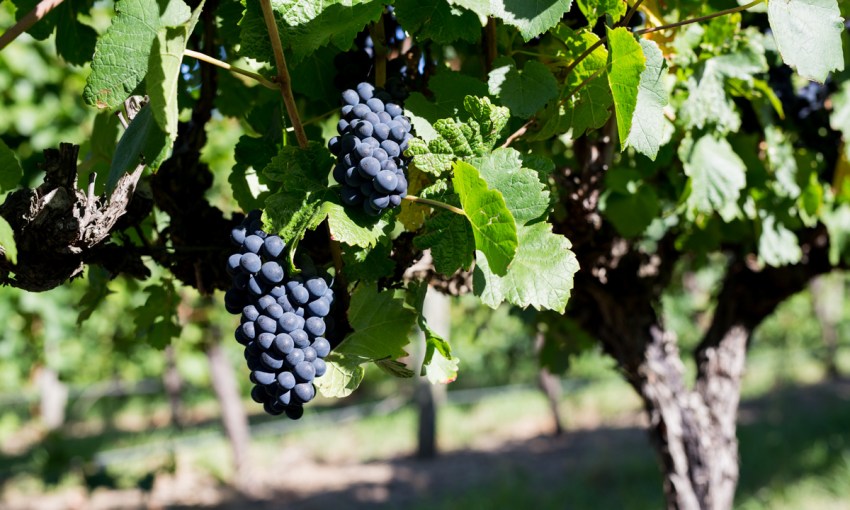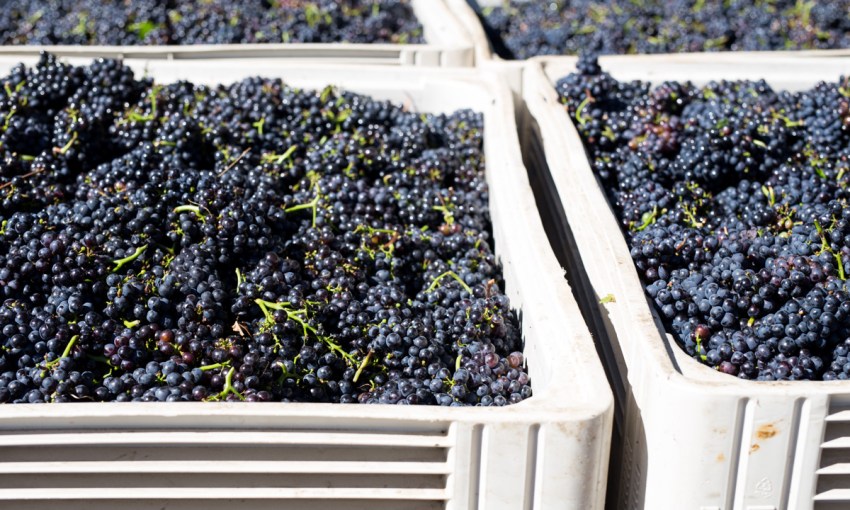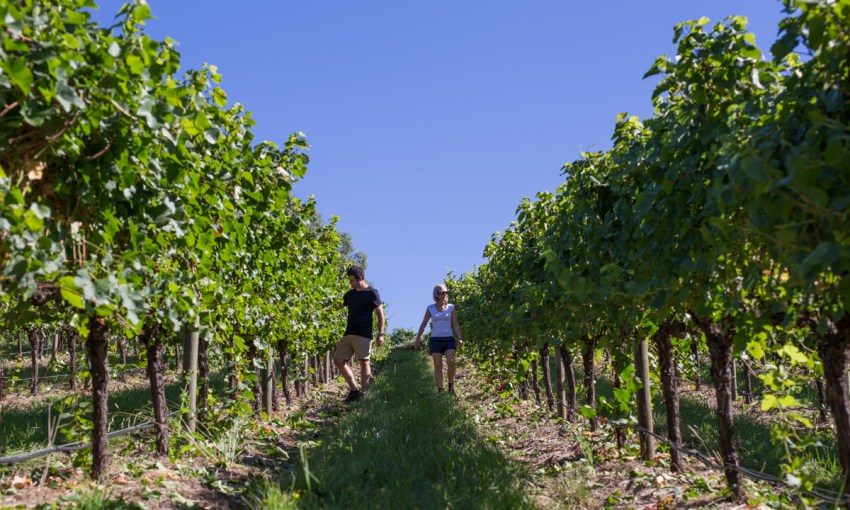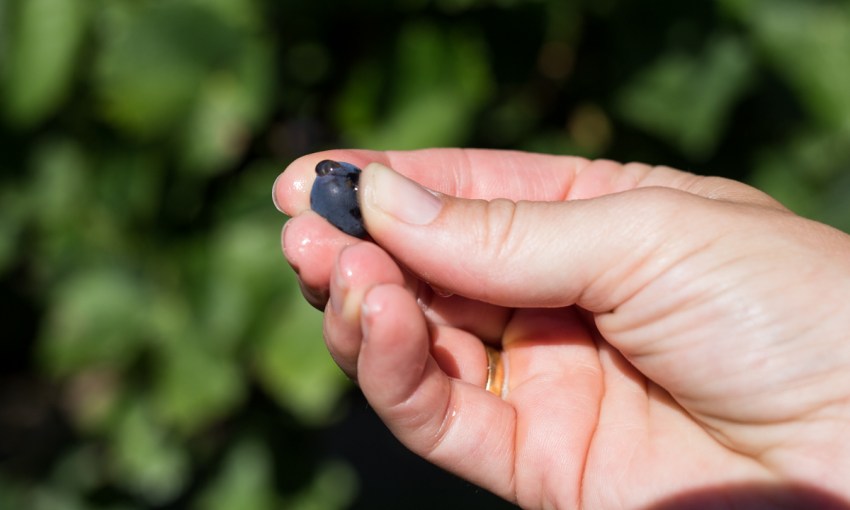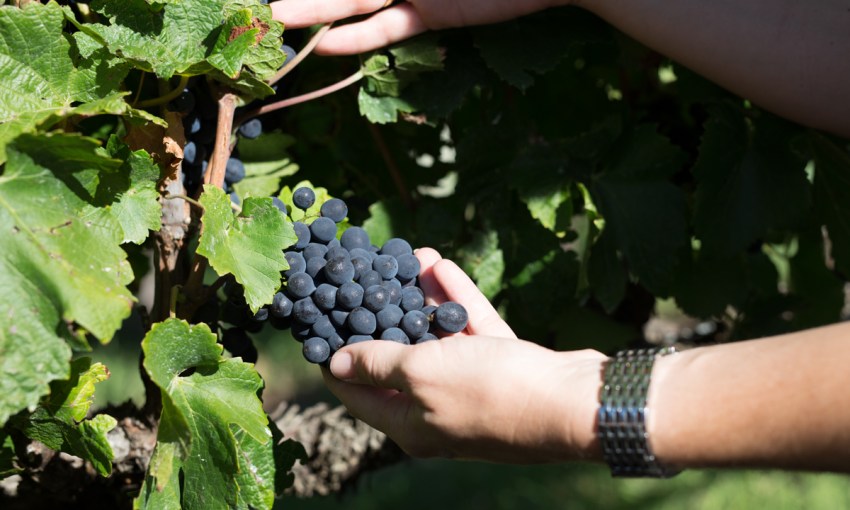Lambrook Wines invited us into their pinot plot to see the process of vintage first hand.
In the vineyard with Lambrook Wines
CityMag meets Adam and Brooke Lampit, the Lambrook team we’ve become acquainted with over the last few months, at a vineyard called Pendle Hill somewhere in the Adelaide Hills.
Visit Lambrook’s website to see what wines are currently available and keep an eye out for when this season’s grapes are eventually available in wine form.
We’re led down several narrow, winding roads before hitting an even thinner dirt road that eventually turns into Pendle Hill’s driveway.
We’ve come to get an insight into what picking fruit from the vine means for a winemaker, and maybe even dispel some of the mysticism that surrounds the winemaking process.
But, being led to a paradisal garden in a location that to this day we cannot find via Google has not helped to dispel much at all.
“If you go into a vineyard and the garden and the grounds and everything look like this, the vineyard [will be] beautiful,” Adam says, surveying the property.
“When you drive in here, you just know that everything’s going to be good.”
The vineyard belongs to Di Davidson, who’s an industry veteran of 40-plus years, and she comes out to greet us.

Brooke and Adam with Di Davidson
We ask what the landscape looked like when she first bought the property.
“[We] came to nothing,” Di says.
“Most of it we did in ’94/’95. [We] came here in the beginning of ’94 and it all went in in ’95. Smallest patch I’ve ever planted…
“It’s not easy country. It’s too steep, and it’s too bitty, and from an economic perspective, there’s a lot of land which isn’t useable – the gullies at the bottom… But it makes good fruit!”
Adam and Brooke agree. The section of vines in the back corner yield the pinot grapes that go into Lambrook’s Spark, and occasionally their premium Emerson Sparkling.
Di heads off to chat with the fruit pickers as we make our way into the rows of vines.
“Probably about three or four years ago, sparkling bases like pinot weren’t really in demand, and now it’s in really strong demand,” Adam says.
“You’ve got Grant Burge sparkling, Croser sparkling, Deviation Road, Bird in Hand – were all doing pinot sparkling or pinot chard sparkling. So sparkling, actually, in Australia has been consistently growing at about 18 per cent per year.
“And the other thing with pinot is that a lot of people use pinot for rosé. So the demand for rosé, they’re having this rosé revolution where, I’m not sure what the numbers are, but the rosé’s actually growing. We’ve doubled our rosé the last three years in a row, and sold out…. So there’s been a bit of pressure on pinot.”

We stop to get a closer look at the fruit.
What CityMag sees is beautiful, blue, sweet looking bunches. We ask to taste and our suspicions are confirmed.
“So what you’re tasting is exactly what the juice will taste like in the tank. We don’t add anything… and then we do a couple of clarification steps, and then we inoculate it with yeast to convert the sugar to alcohol. So it’s really that simple. It’s not anything over the top for the start,” Adam says.
What Brooke and Adam are seeing on the vine this year is a lower crop size, but higher quality fruit.
“So that’s what we want. We want that beautiful bunch there. This is our best vineyard. We want a beautiful bunch like that. That’s absolutely perfect. You can’t get any better than that,” Adam says.
“You can see there’s not much crop here, so this is probably half of what we normally get. The crop is very low, but what happens with a lower crop, is you get intensified flavour.
“We’re not trying for a lower crop, this is what mother nature has given us this year; we’ve pruned exactly the same, we’ve done everything, but this year the quality of this vineyard looks like it could be good enough to use in our Emerson sparkling. It just looks fantastic this year.”
We ask why they prefer to have their fruit handpicked, and part of the reason is the terrain. The Hills are, unsurprisingly, quite hilly, and it can be a dangerous place to have a large machine picker. But it’s also a fact that on pinot vines there will be rounds of second crop green grapes coming through that will spoil a sparkling wine if they were to be added to the mix.
It takes a human eye to sift through the vine and select the right bunches.
“Shiraz and other varieties, you can get away with [machine picking],” says Adam. “So shiraz you might pick at 14 and a half per cent sugar, [but] because we’re picking this so ripe in the development stage – because we want that fresh acidity and we want those real elegant flavours – you’re always going to have something [on the vine] that may be at nine [per cent sugar] and something that might be at 11 or 12, so that’s the reason why we handpick.”
Once the pickers have come through the entire plot, the bins of grapes will be taken back to Lambrook’s winery and refrigerated to harden the skins up before they’re pressed for juice.
Later in the evening, Di will send the reaped vine a dose of water “just to give the vine a bit of a thank you, more than anything, and just to keep it happy, because we want them back again next year,” Adam says.
Eventually CityMag leaves Pendle Hill, and we’re left wondering how many other people consider thanking plants and the environment around them for the gifts we so often take as granted. We also wonder how many other beautiful gardens are tucked behind the obscuring hills we drive through on our way back to the city.
We leave still thoroughly mystified.



